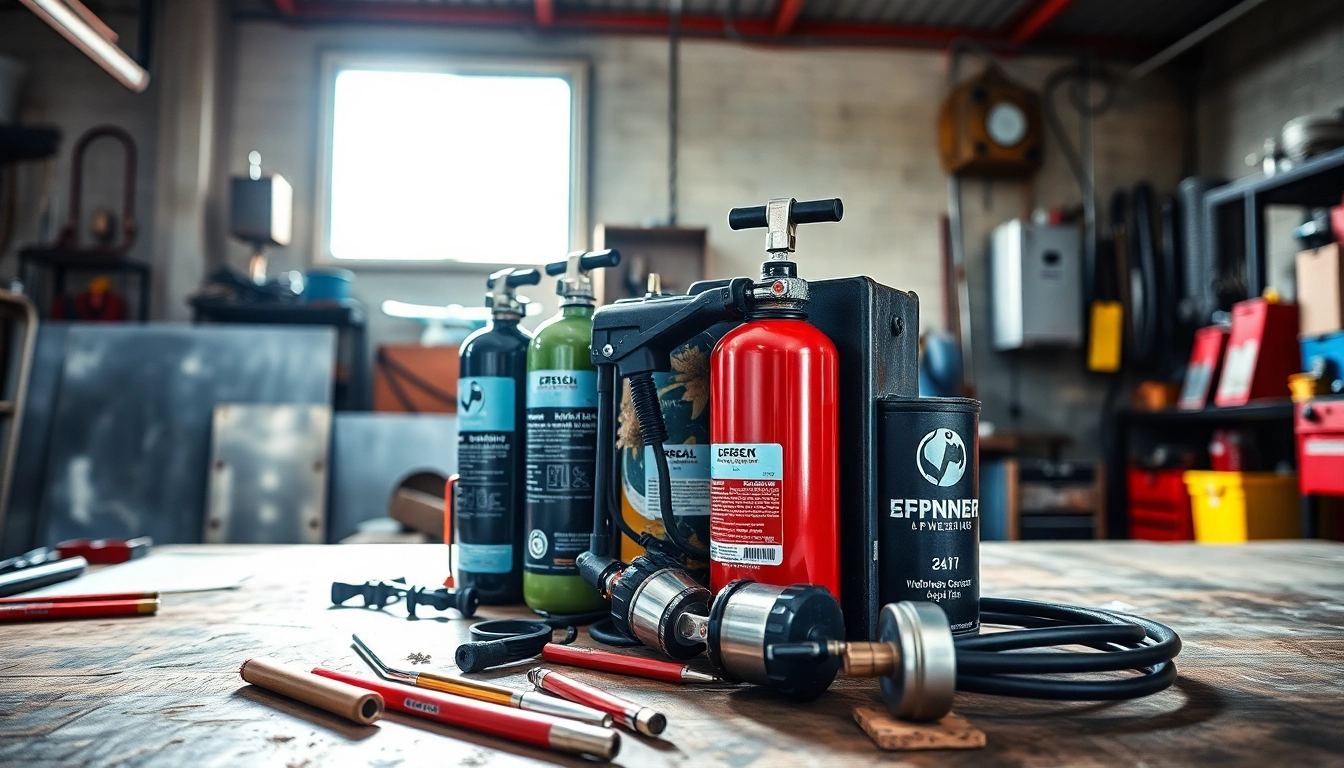Understanding the Level 5 NVQ Diploma in Controlling Lifting Operations
The level 5 nvq diploma in controlling lifting operations answers is a pivotal qualification for professionals in the lifting operations sector. This diploma not only signifies one’s competency in the field but also aligns with the increasing emphasis on workplace safety and operational efficiency. Understanding what the qualification entails can provide a significant advantage for individuals looking to advance their careers or enhance their operational practices in lifting and handling.
Overview of the Qualification Requirements
The Level 5 NVQ Diploma in Controlling Lifting Operations is designed for individuals who are already in supervisory or managerial roles within the lifting operations sector. The qualification emphasizes practical skills alongside theoretical knowledge, ensuring that candidates are well-prepared to manage lifting activities safely and effectively. To earn this diploma, candidates must pass a series of assessments that cover areas such as planning lifts, risk management, and the technical specifications of lifting equipment.
This qualification is structured to require approximately 485 guided learning hours, supplemented by a minimum of 985 hours of workplace experience, ensuring that learners are both knowledgeable and experienced. The assessment methods may include practical observation, professional discussions, and portfolio submissions, which must provide evidence of the candidate’s ability to plan, manage, and execute lifting operations.
Importance of Safety Standards in Lifting Operations
Lifting operations inherently involve risks, making adherence to safety standards critical. The NVQ Level 5 Diploma instills a robust understanding of the legal requirements and best practices surrounding lifting operations. Understanding these principles helps minimize hazards associated with lifting activities, protecting both workers and equipment.
Safety standards, such as those provided by the Health and Safety Executive (HSE) in the UK, lay the groundwork for effective lifting strategies. This diploma emphasizes the importance of developing and communicating clear safety protocols and ensuring that all team members are trained in emergency procedures, equipment usage, and risk assessments.
Expected Outcomes for Graduates of This Diploma
Graduates of the Level 5 NVQ Diploma are expected to emerge with a comprehensive skill set that makes them valuable assets to any organization involved in lifting operations. Key outcomes include:
- Enhanced knowledge of lifting equipment and technology.
- The ability to conduct thorough risk assessments and implement appropriate safety measures.
- Proficiency in planning, managing, and evaluating lifting activities.
- Improved communication skills essential for leading teams and ensuring compliance.
- Readiness to take on leadership roles within lifting operations.
Key Concepts in Controlling Lifting Operations
Fundamental Principles of Lifting Safety
At the heart of controlling lifting operations is a commitment to safety. Understanding the fundamental principles of lifting safety involves recognizing the various factors that contribute to a safe lifting environment. These factors include load weight and stability, the capacity of lifting equipment, environmental conditions, and the competency of personnel involved in the lifting process.
Employing the principles of The Hierarchy of Control can significantly enhance safety. This includes measures such as eliminating the need for lifting entirely or substituting with safer methods, collectively utilizing mechanical aids, and ensuring effective training for operatives. These principles are crucial in formulation safety protocols that can mitigate risks during lifting operations.
Planning and Coordinating Lifts Effectively
Effective planning and coordination are essential for successful lifting operations. This involves detailing each step of the lifting process, including preparing a lift plan, selecting the appropriate equipment, and ensuring that all stakeholders are informed of their responsibilities. A well-structured lift plan should also comply with legal frameworks and safety regulations.
Coordination plays a key role during the execution of lifts to ensure that all individuals involved understand the planned operations. Clear communication channels must be established to facilitate seamless operations and rapid response to any emerging issues. Use of hand signals, radio communication, and pre-lift briefings are recommended practices that enhance coordination and reduce the likelihood of accidents during lifts.
Risk Assessment and Management Techniques
Risk assessment is a critical component of lifting operations. Individuals pursuing the Level 5 NVQ Diploma must demonstrate their ability to conduct comprehensive risk assessments that identify potential hazards associated with lifting tasks. This process typically involves several steps:
- Identifying hazards related to lifting operations.
- Evaluating the risks associated with each identified hazard.
- Implementing control measures to mitigate risk.
- Reviewing and monitoring the effectiveness of control measures.
The ability to effectively manage risks can mean the difference between safe lifting operations and tragic accidents. Candidates must apply these techniques practically, often in real-world scenarios, to ensure they can adapt to unique challenges they might face on the job.
Preparation Strategies for the NVQ Level 5 Exam
Effective Study Techniques and Resources
Preparing for the NVQ Level 5 exam requires strategic planning and effective study techniques. Candidates should consider utilizing a variety of resources, including:
- Official training manuals and guidelines provided by awarding bodies.
- Online study groups or forums where they can exchange knowledge and experiences.
- SIMULATION software that reflects lifting scenarios to provide hands-on experience.
Developing a study schedule that allocates study time for each topic in the syllabus can also aid in ensuring comprehensive coverage of the materials. Engaging with external study aids—such as videos or workshops—can further enhance understanding and retention of critical concepts needed for the exam.
Mock Exams and Practice Questions
Taking mock exams is a highly effective way to prepare for the NVQ Level 5 exam. Mock exams help candidates familiarize themselves with the exam format and question styles while also identifying areas where they may need additional study. Candidates can often find these practice exams available through educational resources or training centres focused on NVQs.
Practical application of knowledge through practice questions also reinforces learning. These questions should cover various topics, including lifting techniques, safety regulations, and best practices, to ensure a well-rounded preparation.
Common Pitfalls to Avoid in Exam Situations
While preparing for the NVQ Level 5 exam, candidates may encounter several pitfalls that could hinder their performance. Common issues include:
- Cramming: Last-minute studying can lead to undue stress and poor retention. It is important to spread study time over a long period.
- Neglecting practical experience: Theoretical knowledge must be bolstered with practical application. Candidates should seek opportunities to engage in real-life lifting operations.
- Ignoring the syllabus: Frequently review the syllabus to remain focused on what is required for the exam, adjusting preparation strategies as necessary.
Avoiding these pitfalls will enhance candidates’ chances of performing well on the exam and obtaining their qualifications.
Real-World Applications of NVQ Level 5 Knowledge
Case Studies of Successful Lift Operations
Real-world case studies are invaluable for understanding the application of knowledge gained through the NVQ Level 5 Diploma. Several companies have effectively utilized best practices from their teams, resulting in efficient, safe lifting operations. For instance:
A leading construction firm implemented a new lifting plan based on its graduates’ insights, focusing on advanced equipment use and real-time monitoring of operations. Following the changes, the company reported a significant reduction in incident rates and an increase in project completion speed.
Industry Best Practices in Lifting Management
To implement best practices in lifting management, managers should continuously seek improvements in processes. Some industry best practices include:
- Regularly scheduled training sessions to keep every member of the lifting team up-to-date with new technologies and techniques.
- Emphasizing the importance of post-lift reviews to critically analyze the success of lift plans and operations.
- Fostering an open culture for feedback and continuous improvement among team members.
Following these best practices can significantly elevate the standards of lifting operations within an organization.
Leveraging NVQ Qualifications for Career Advancement
Achieving the Level 5 NVQ Diploma opens many career pathways within the lifting operations sector. Graduates can pursue roles such as lifting operations manager, safety advisor, or training consultant within construction firms, manufacturing, logistics, and even specialized surveying. Each of these positions typically demands both theoretical knowledge and practical expertise—qualities honed during the NVQ process.
Furthermore, gaining this diploma enhances one’s profile, making candidates more attractive to employers seeking individuals capable of leading teams and ensuring compliance with safety regulations.
Recap and Further Resources for Level 5 NVQ Success
Summarizing Key Takeaways
The Level 5 NVQ Diploma in Controlling Lifting Operations is integral for those aiming to excel in managing lifting operations. Key takeaways from the qualification include the importance of safety standards, effective planning, risk management, and the ability to coordinate lifting operations proficiently.
Available Resources for Ongoing Learning
Continuous learning after achieving the NVQ Level 5 Diploma is paramount for long-term success. Resources for ongoing education can include:
- Professional development courses offered by accredited training providers.
- Membership with industry associations which often provide insights on the latest standards and best practices.
- Networking opportunities to engage with other professionals in the field.
Networking Opportunities in Lifting Operations
Establishing a strong professional network is beneficial for sharing insights and staying informed on industry trends. Candidates can explore networking opportunities through:
- Participating in industry conferences and events.
- Engaging with online professional forums focused on lifting operations.
- Collaborating with mentors and experienced professionals in the field.
Building these connections not only enhances knowledge but can also lead to career advancement opportunities.















Leave a Reply